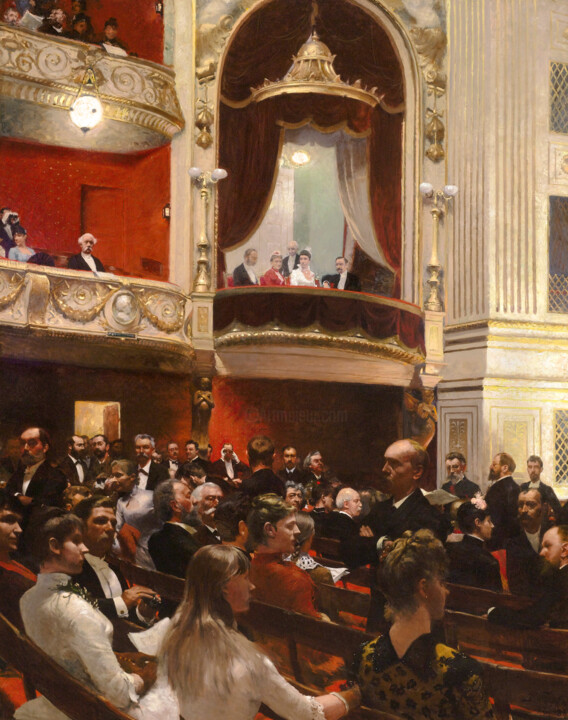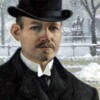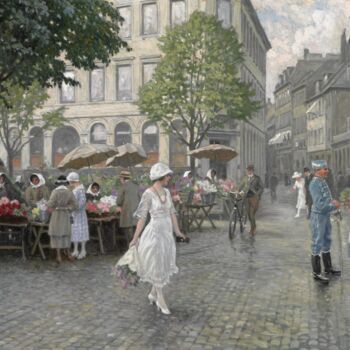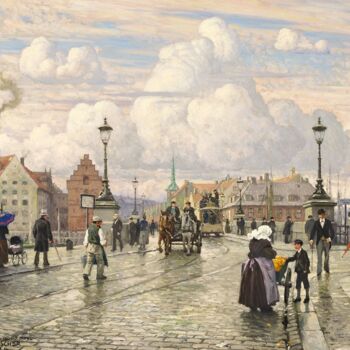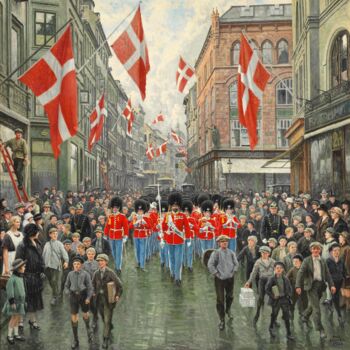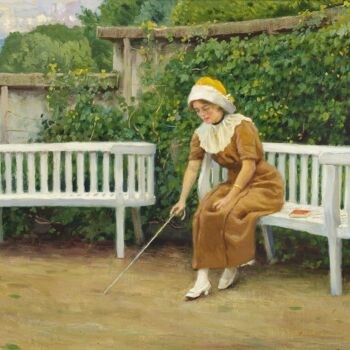An Evening at the Royal Theatre (1888) Pintura por Paul Gustav Fischer
Não está à venda
Vendido por Artmajeur Editions
Esta impressão está disponível em vários tamanhos.
Vendido por Artmajeur Editions
-
Obras de arte originais
Pintura,
Óleo
em Tela
- Dimensões As dimensões estão disponíveis mediante solicitação
- Moldura Esta obra de arte não está emoldurada
- Categorias Classicismo Monumento
Temas relacionados
Paul Fischer was born in Copenhagen, Denmark. He was a member of the fourth generation of a Polish-born Jewish family. Philip August Fischer (1817–1907) and Gustafva Albertina Svedgren had him as their son (1827–83). The family was in the upper middle class. His father used to be a painter, but he became successful by making paints and lacquers.
When he was in his mid-teens, he went to the Royal Danish Academy of Art in Copenhagen for two years. This was the only time he got a formal art education. Fischer began painting when he was young. His father taught him how to do it. He worked at his father's factory from 1878 to 1888 and showed his work often at the Charlottenborg Spring Exhibition from 1884 to 1902.
Because of a painting he had published in Ude og Hjemme, he met young Danish naturalists and his reputation began to grow. His early paintings show how people live in cities. He was called "Copenhagen's painter" (Kbenhavns maler) because of this. From 1891 to 1895, he lived in Paris, where he made his colors richer and lighter. Fischer became well-known as a painter of city scenes, not just of Copenhagen but also of places in Scandinavia, Italy, and Germany. He was at his best between 1890 and 1910.
He learned from his Norwegian and Swedish peers, especially Carl Larsson. During this time, he also painted bright, sunny scenes of people at the beach, including some with naked women, and he became interested in making posters after seeing the work of Théophile Steinlen and Henri de Toulouse-Lautrec.
During the time Laurits Tuxen was painting, he was the most important artist in Denmark. Fischer didn't get much attention from critics during his lifetime, but his art sold well. When Sweden gave Norway back to the Norwegians, Fischer instead of Tuxen got a commission from the King of Norway to paint the event. This was a big win for Fischer over Tuxen.
-
Nacionalidade:
DINAMARCA

- Data de nascimento : 1860
- Domínios artísticos: Representado por uma galeria,
- Grupos: Artistas Contemporâneos Dinamarqueses Artistas apresentados por uma galeria

